
Download Management Report Bundle
Management Report Format
1. Title Page
- Report Title: Clear and concise.
- Company Name: Mention the organization.
- Prepared By: Author’s name(s) and title(s).
- Date of Submission: Include the full date.
2. Executive Summary
- Brief overview of the report.
- Highlight key findings, conclusions, and recommendations.
- Write this section last to summarize the entire document.
3. Table of Contents
- List all major sections and their page numbers for easy navigation.
4. Introduction
- Purpose of the Report: State the objective clearly.
- Scope: Define what is included and excluded.
- Background Information: Provide necessary context for understanding.
5. Methodology
- Data Sources: Outline where and how data was collected (e.g., surveys, financial records, interviews).
- Approach: Briefly describe how the analysis was conducted.
6. Findings/Analysis
- Present findings logically, using:
- Headings and Subheadings: To structure the content.
- Tables, Charts, and Graphs: For visual representation of data.
- Key Observations: Highlight trends, issues, and insights.
7. Discussion
- Interpretation of Findings: Explain what the data means.
- Impact Analysis: Discuss how the findings affect the organization or project.
- Risks or Challenges: Mention any potential concerns.
8. Recommendations
- Provide actionable suggestions based on the analysis.
- Prioritize recommendations and include the rationale for each.
- Highlight resource implications, if any (e.g., budget, personnel).
9. Implementation Plan (Optional)
- Outline steps to implement the recommendations.
- Define timelines, responsibilities, and monitoring mechanisms.
10. Conclusion
- Recap the main findings and recommendations.
- End with a forward-looking statement or call to action.
11. Appendices
- Include supplementary material, such as:
- Raw data tables.
- Survey questionnaires.
- Detailed calculations or formulas.
12. References
- Cite all data sources, reports, or documents referred to in the report.
Management Report Samples
-
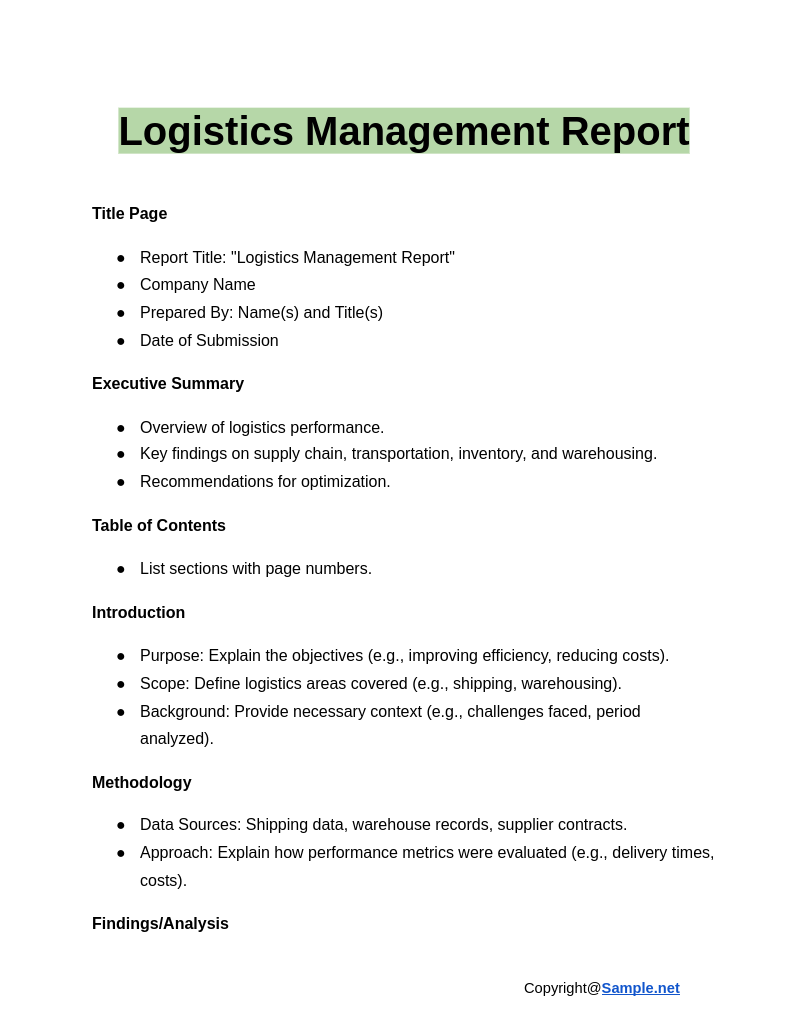
Logistics Management Report
download now -
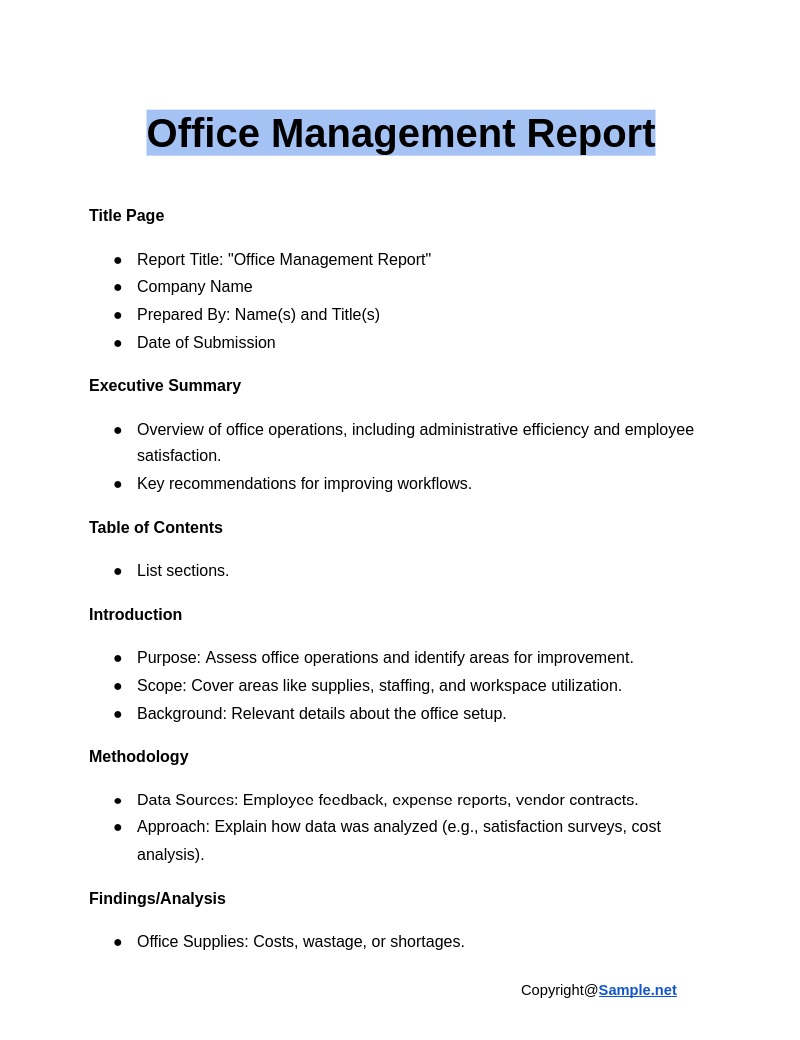
Office Management Report
download now -
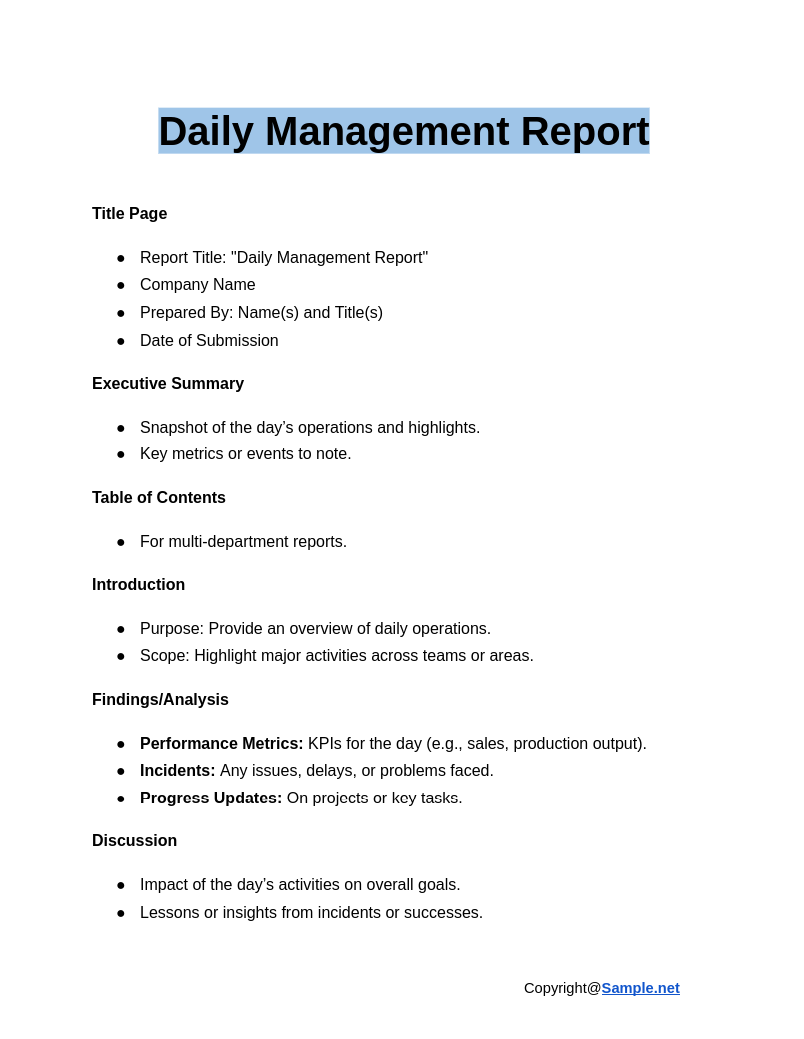
Daily Management Report
download now -
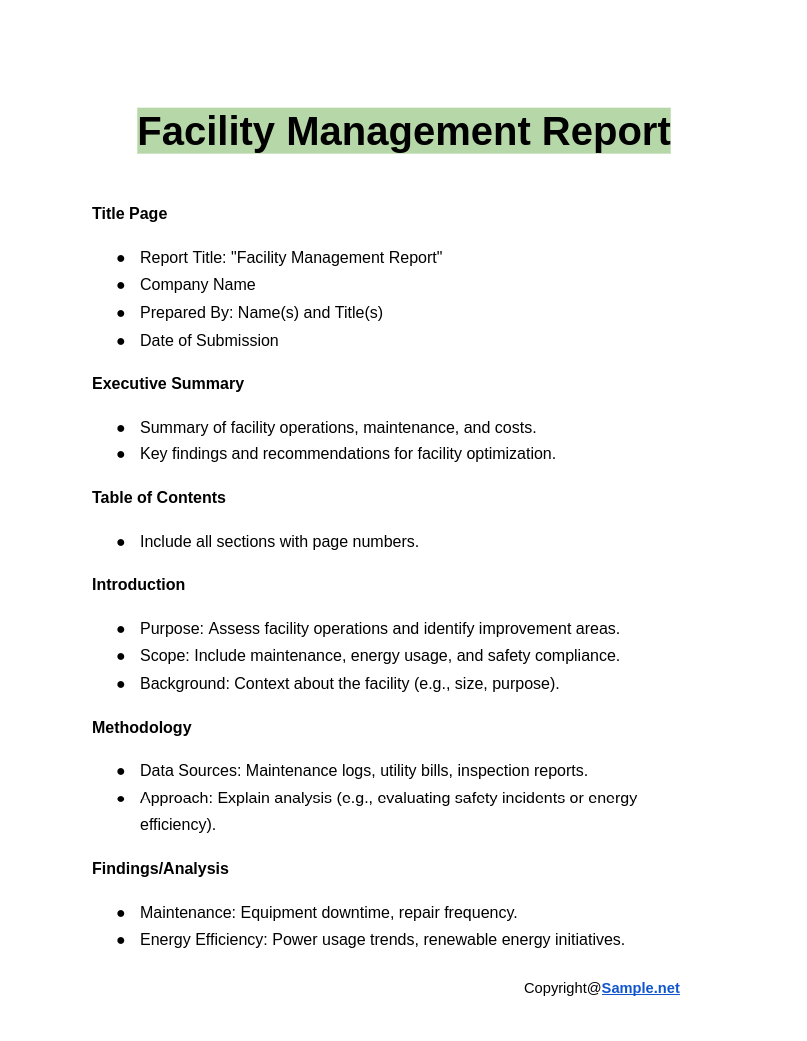
Facility Management Report
download now -
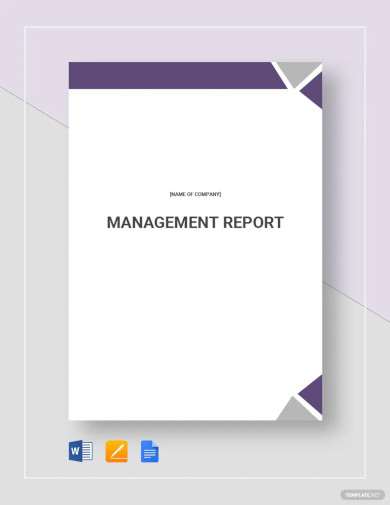
Management Report Template
download now -
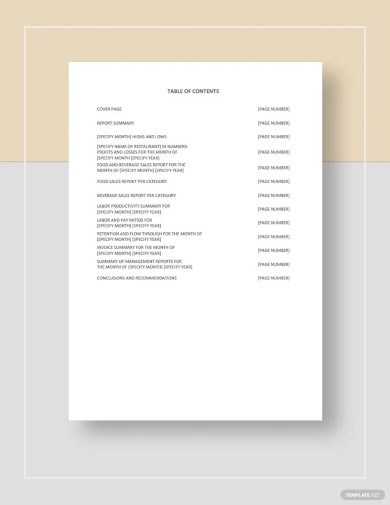
Monthly Management Report Template
download now -
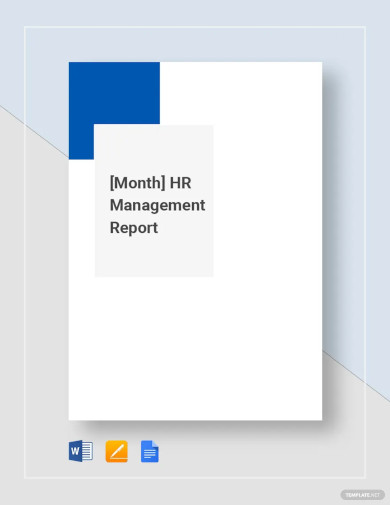
HR Monthly Management Report Template
download now -
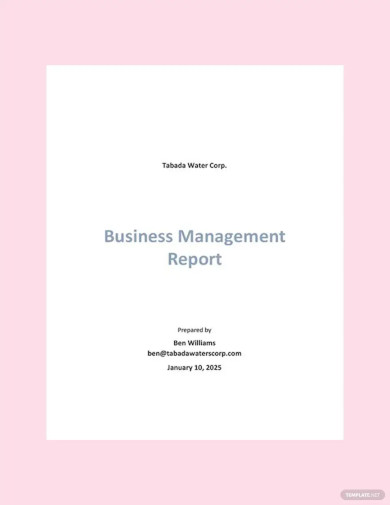
Sample Business Management Report Template
download now -

Monthly Property Management Report Template
download now -
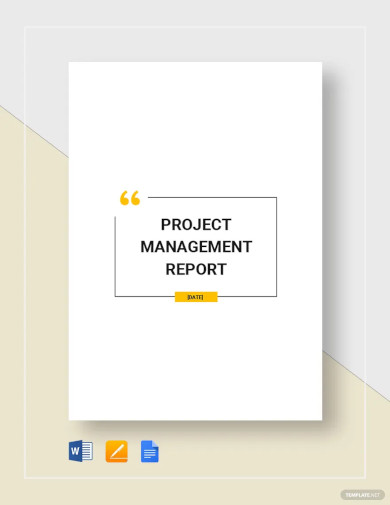
Project Management Report Template
download now -
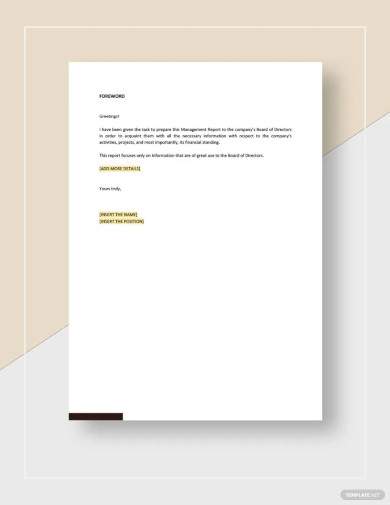
Management Report To Board of Directors Template
download now -
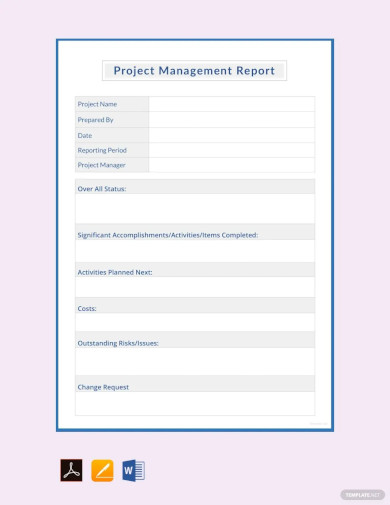
Editable Project Management Report Template
download now -

Monthly Business Management Report Template
download now -
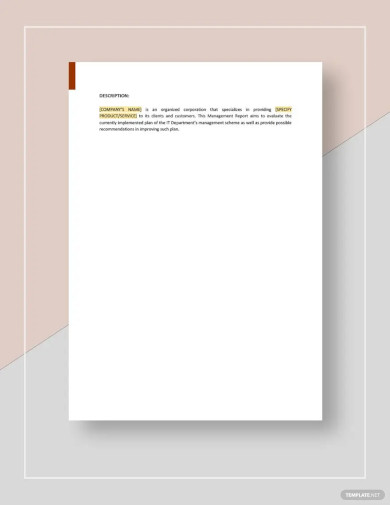
IT Management Report Template
download now -

Simple Project Management Report Template
download now -
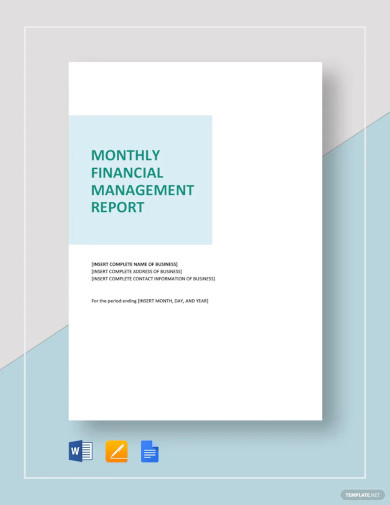
Monthly Financial Management Report Template
download now -
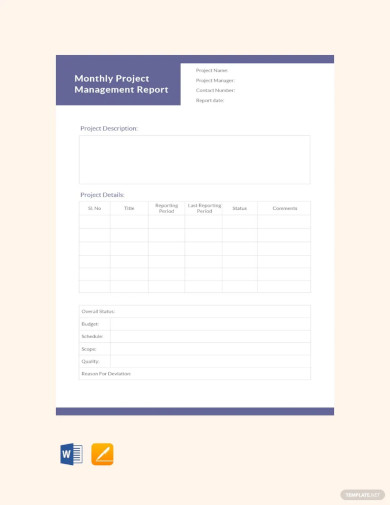
Monthly Project Management Report Template
download now -
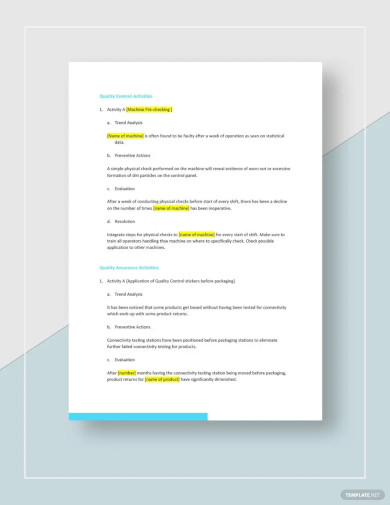
Monthly Quality Management Report Template
download now -
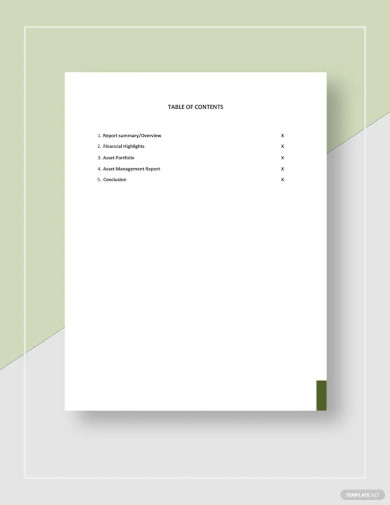
Real Estate Asset Management Report Template
download now -
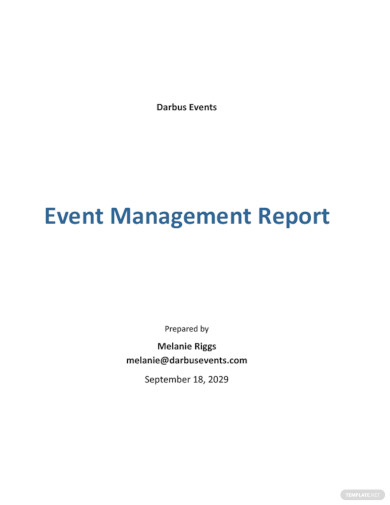
Free Event Management Report Template
download now -
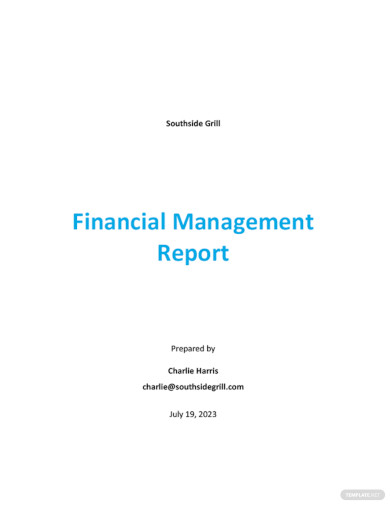
Financial Management Report Template
download now -
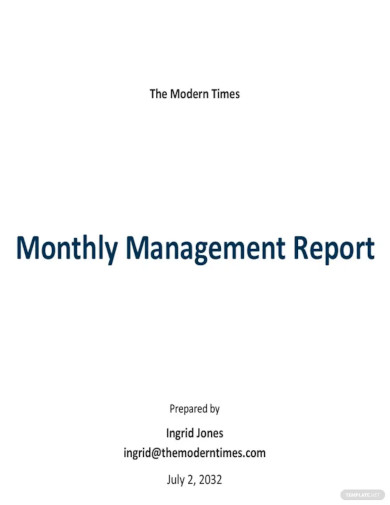
Simple Monthly Management Report Template
download now -
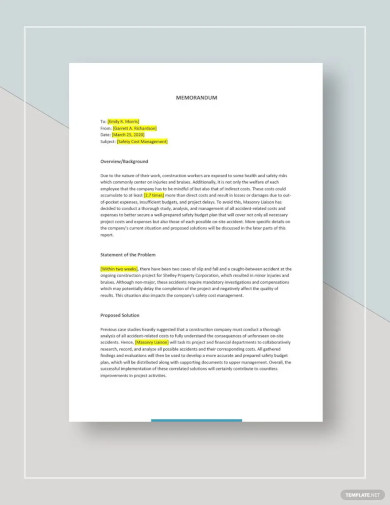
Business Management Report Template
download now -

Monthly Budget Management Report Template
download now -
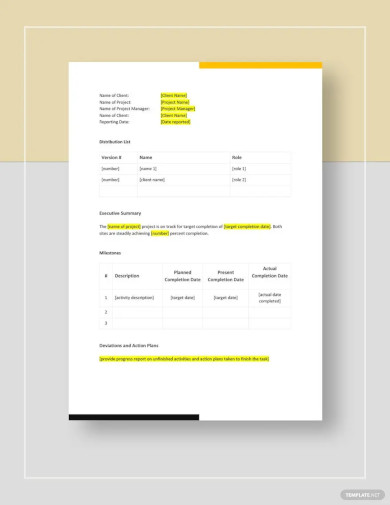
Construction Project Management Report Template
download now -
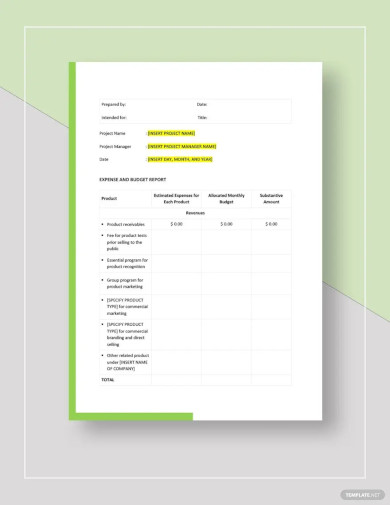
Monthly Product Management Report Template
download now -

Basic Business Management Report Template
download now -

Standard Project Management Report Template
download now -

IT Management Report Template
download now -
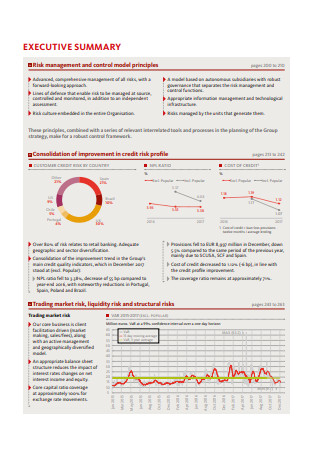
Risk Management Report Dashboard
download now -
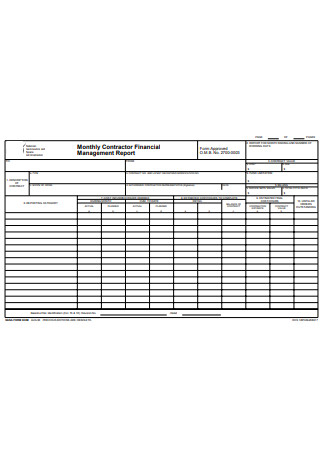
Monthly Contractor Financial Management Report
download now -
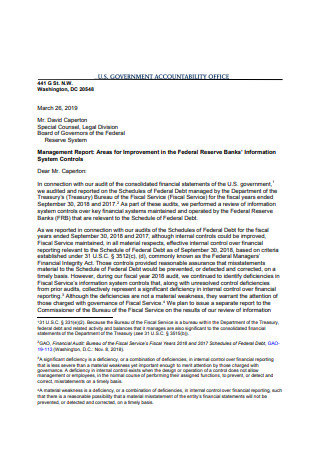
Management Report Accounting
download now -
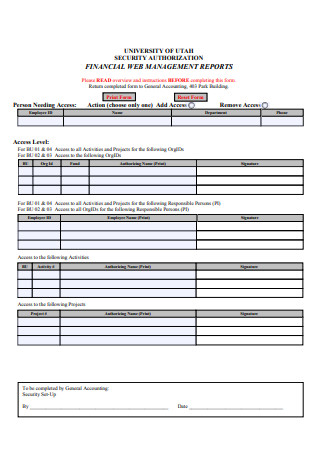
Financial Business Management Report
download now -

Hotel Management Report
download now -
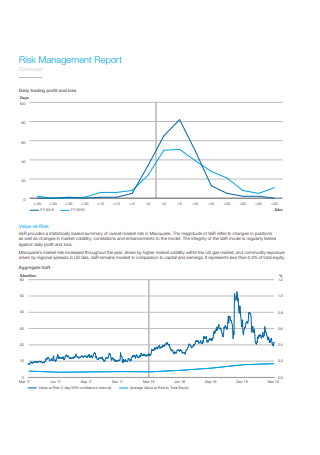
Inventory Management Report
download now -
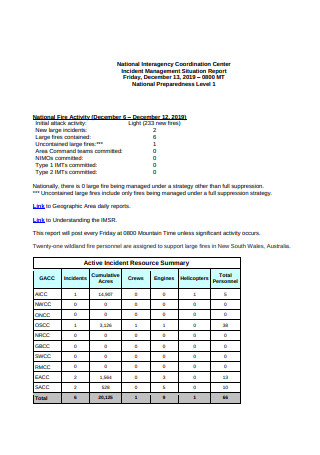
Incident Management Situation Report
download now -
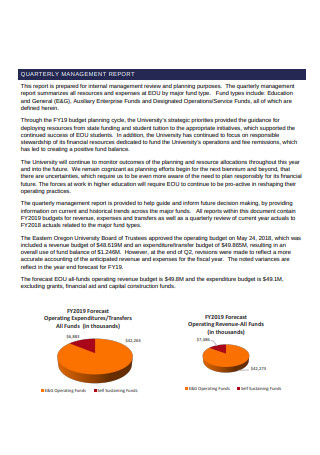
Management Recruitment Report
download now -
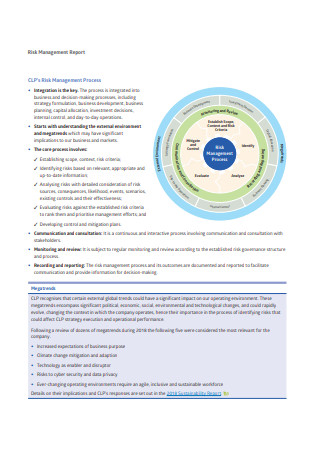
Weekly Management Report Sample
download now -
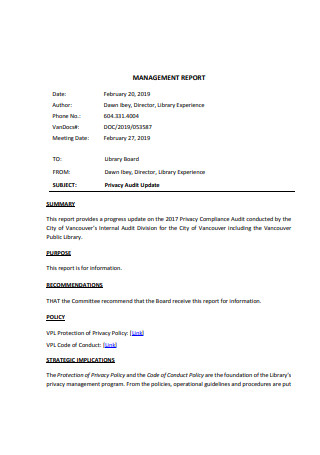
Visual Management Report
download now -
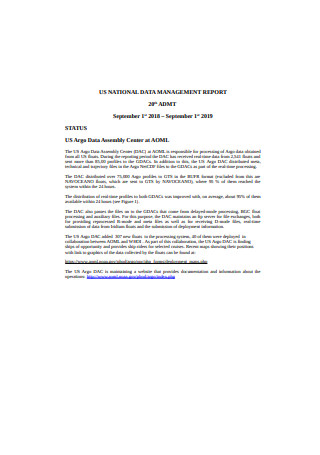
Data Management Status Report
download now -
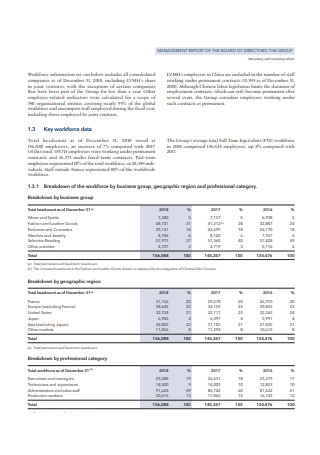
Problem Management Report of the Board of Directors
download now -
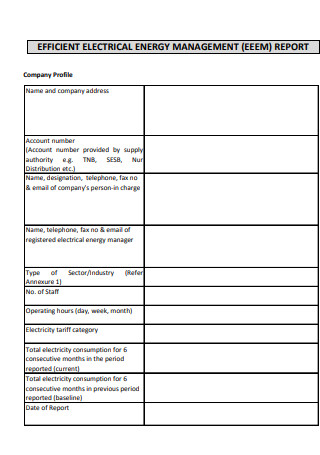
Commercial Management Report
download now -
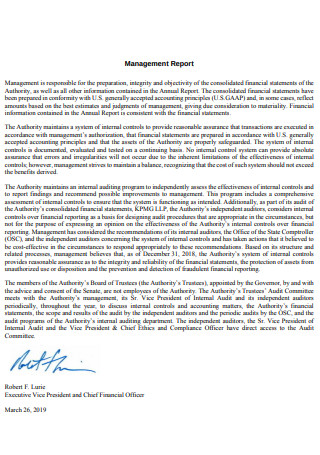
Lead Management Report
download now -
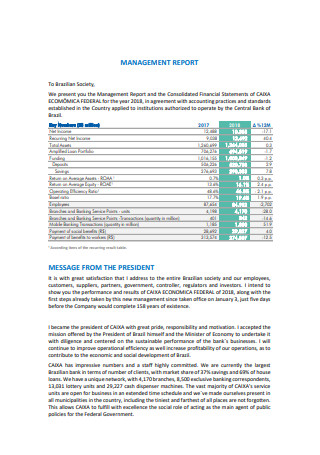
Financial Management Report Sample
download now -

Supplier Management Report
download now -
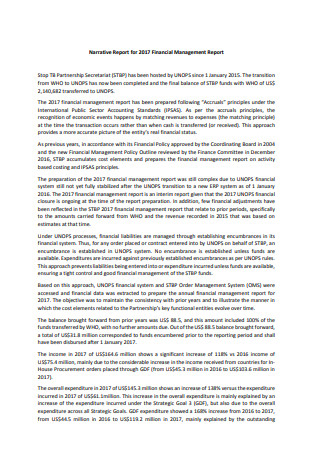
Financial Management Report High level
download now -
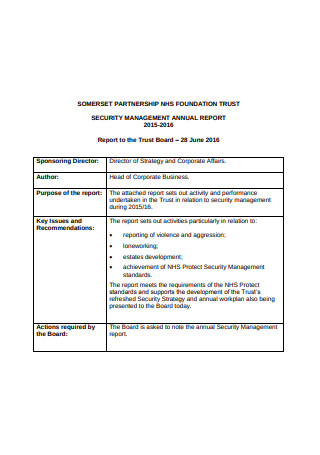
Annual Security Control Management Report
download now -

Annual kpi Management Report
download now -
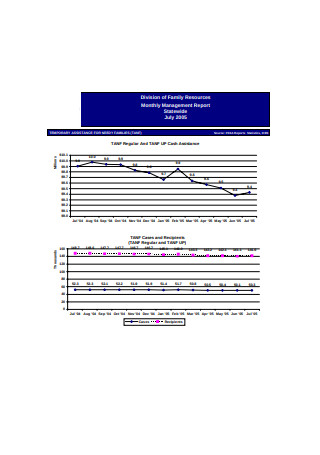
Monthly Cover Management Report
download now -
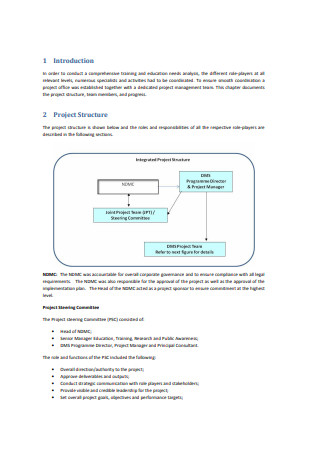
Industry Project Management Report
download now -
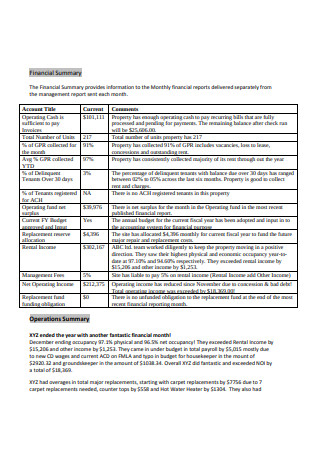
Property Management Monthly Report
download now -
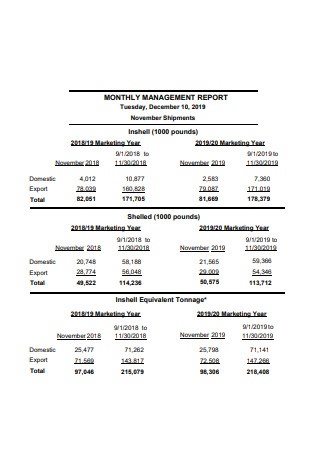
Monthly Management Report Analysis
download now -
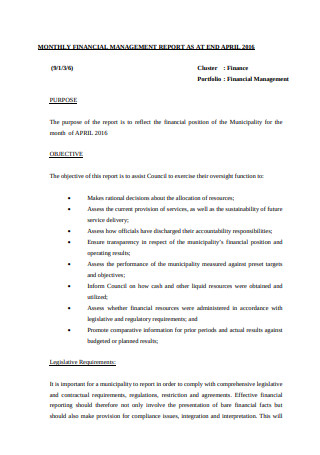
Monthly Financial Management Report
download now -
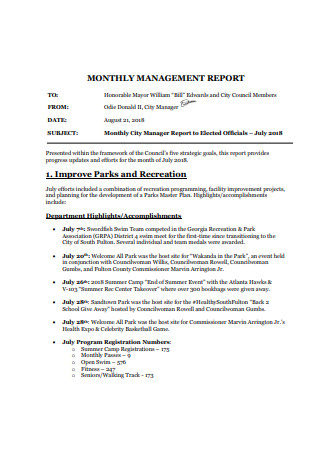
Sample Monthly Management Report
download now -
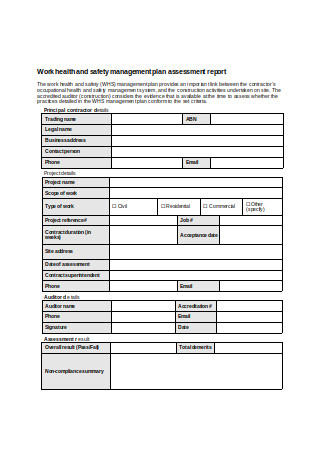
Safety Management Plan Assessment Report
download now -
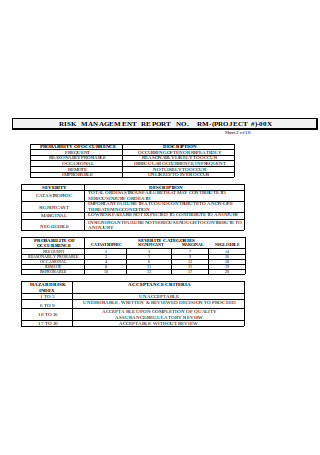
Simple Risk Management Report
download now -
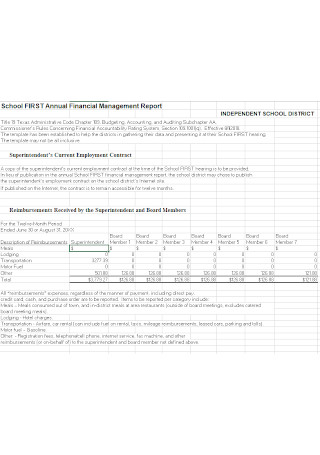
School Annual Management Report Template
download now
What is a Management Report?
Keeping an eye on the management’s progress has never been this easy with the help of management reports. Managers use this type of report in gathering relevant and crucial data from the different business aspects, in keeping track of Key Performance Indicators (KPIs), and in comprehensively presenting these data. You can also see more on Performance Reports.
Additionally, management reports are essential document that managers of various company departments can benefit from as it enables them to report outcomes, problems, and risks of a business comprehensively. And because of that, its audience, which comprises of executives and company leaders, can determine the right path and decisions to take for the business to survive the cutthroat industry it belongs in. You can also see more on Lead Management Report.
Used mainly for internal purposes, this type of report is specially made to help the management monitor and keep a close eye on the performance of a company’s operations. Management reports can be quite tedious to make. Fortunately, you don’t have to come up with one on a daily or weekly basis since this can only be made for a specific schedule such as monthly, quarterly, or annually. Other than managers, directors, and analysts share the responsibility of preparing and presenting this type of report.
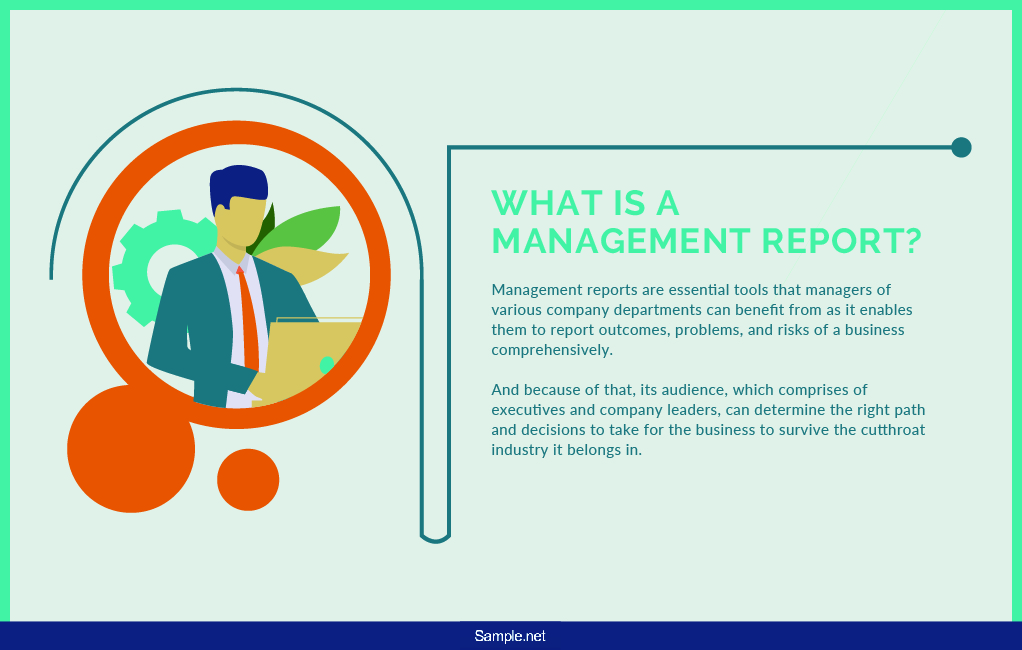
Why Do We Need Management Reports?
Without the existence of management reports, managers will have difficulty in running smooth business operations. That is why if why a company wants effective management, having a management reporting system is something that should take in place in every organization. With this type of report, you gain a detail report of what drives and slows your business performance down. You can also see more on Brand Management Report.
In management, reporting plays a crucial role in the performance of the company. Reports provide an avenue where people can carry out performance plan assessments, determine both successes and lapses, make data-driven decisions, and set future benchmarks and call-to-actions. With reports, no management would have to guess where it stands since a management report can already cover this knowledge.
With management reports, you can not only check-up on the performance of an organization, but you can also keep track of the performance of the employees of that organization. If you have difficulty with the operational efficiency of your employees, a management report can help you pinpoint what these challenges are and determine the possible solutions that improve it. And as soon as it progresses, a management report can support in maintaining such efficiency.
Once you can come up and present a well-prepared management report, it paves the way for enhanced decision-making processes, effective management, active issue correspondence, and efficient organizational services. You can also see more on Process Report.
Basic Elements of an Effective Management Report
A management report, like any other type of report, can only be effective if it contains the necessary key elements that make it so. To help you out, below are some of the key elements that you should always incorporate in this type of report
How Do You Create Management Reports?
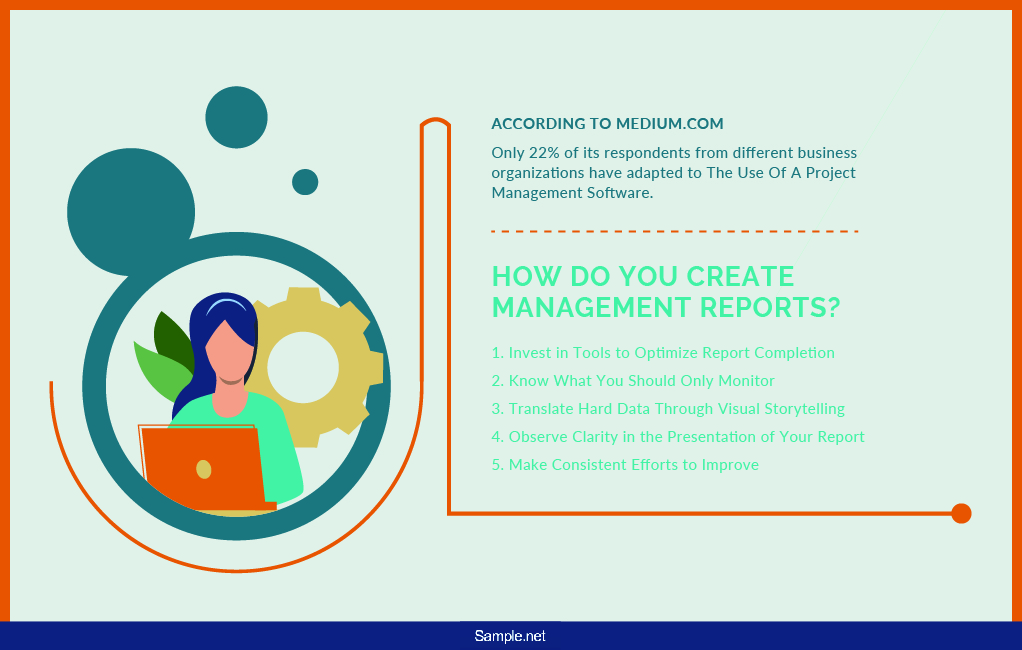
It takes a lot of work to prepare and present management reports. Even if you are bound to experience its tedious processes, know that in the end, it’s going to be worth it since your report can contribute so much to the data-driven decisions of your leaders. You can also see more on Management Consulting Report.
Below, we explore some guidelines that you can follow to carry out effective management report writing.
1. Invest in Tools to Optimize Report Completion
Management reports are generally substantial on data, but what if your company is yet to adopt modern systems that make description completion easy? Management reports will not only lose their quality and reliability, but managers will also lose their credibility in the long run.
Medium reports a survey which revealed that only 22% of its respondents from different business organizations have adapted to the use of a Project Management plan software. This could only mean that 78% who are yet to adapt are still experiencing challenges when it comes to gathering reports, and they still do it manually.
The advancements in gathering and managing report data are something that every business organization should invest in. The use of Microsoft Excel and PowerPoint simply doesn’t cut it these days since it can barely help any management in acquiring real-time data from KPIs. The same survey reported in Medium shows that 55% of its respondents coming from many organizations have no idea of its real-time KPI.
2. Know What You Should Only Monitor
When gathering data for your management report, there is always the possibility that you will encounter various data that you want to include in your report. This will only confuse the audience and, worse comes to worst, they will even ask you to rework and make revisions. So before you get your management report jampacked with unnecessary details, you need to know first the details that you want to keep track of in your report. No matter how you perceive a particular data as necessary, most of the time, it’s not, and it’s only going to make your report lose its precision.
It’s like highlighting your notes, and you end up highlighting every single line on each page.
An elaborate management report is, therefore, something executives will appreciate, but, as you may already know, too much of everything can be harmful. When you finally write a report, just stick to do the data that you can consider as a critical ingredient to the recipe of your business’ success. You can also see more on Monthly Business Report.
3. Translate Hard Data Through Visual Storytelling
Upon gathering data for your management report, you will most likely generate raw, hard data. Instead of merely presenting it to your target audience raw and as it is, why not translate it into something understandable by everyone? If you consider this, try out visual storytelling. When doing visual storytelling, you do two things: come up with a clear narrative and back it up with data visualization tools such as charts and figures. Create a perfect balance between written content and graphics to create an informative and persuasive presentation.
For instance, should you want to compare the sales during the first quarter of the year to the sales of the last quarter of the previous year, you can create a line chart that will show its differences, know the trends, and make sense out of such data. With compelling storytelling, assertive decision making is a guarantee.
4. Observe Clarity in the Presentation of Your Report
Every management reporting should make clear as to its primary objective. When observing clarity in your report’s presentation, there are two things that you need to look into: the context and the design. It is a must that you observe a good balance between these two to ensure that your management report can be understood by everyone who reads it and can find it easy to make decisions out of its contents.
In making the context clear, see to it that you layout every single data, whether big or small, accordingly. Use the right terms and words in explaining figures. Ensure the numbers are accurate. Elaborate your report without sacrificing brevity and conciseness. Provide meaning and explain the relevance of whatever data you decide to include in your report. When it comes to design, follow basic design principles such as including negative space, selecting pleasing color schemes, using presentable font styles and colors, incorporating well-thought-out data visualization tools, and so on. Be careful with the design elements that you would include, as it could affect the entire presentation of your report. You can also see more on Status Reports.
5. Make Consistent Efforts to Improve
If you are a manager, expect that you will always find yourself making management reports as it is part of your job. That is why continuous efforts to improve your way of gathering data and presenting these into slick report presentations is something that should be expected of you. You can never go wrong if you decide to adapt to innovations for the sole reason that you want to keep on improving. Whatever type of management report you wish to create, be it status reports, analysis reports, or project management reports, your continuous efforts on improving will not be wasted.
FAQS
How do Management Reports help in decision-making?
Management Reports consolidate critical data, providing a clear view of an organization’s performance. They identify trends, opportunities, and challenges, enabling leaders to make informed, data-driven decisions. By focusing on actionable insights, these reports minimize guesswork and enhance strategic planning.
What are the key elements of an effective Management Report?
An effective Management Report includes accurate data, clear objectives, actionable insights, and a logical structure. It should also feature visual aids like graphs and tables to enhance understanding. Tailoring the report to its audience ensures it addresses their specific needs and adds value. You can also see more on End of Year Report.
Can Management Reports improve organizational efficiency?
Yes, by identifying inefficiencies and tracking progress, Management Reports highlight areas for improvement. They enable leaders to allocate resources effectively, streamline operations, and implement targeted solutions. Over time, this drives higher productivity and operational excellence.
What challenges arise in creating Management Reports?
Challenges include collecting accurate data, aligning the report with organizational goals, and presenting complex information in an understandable format. Overcoming these requires clear objectives, reliable data sources, and effective communication tools. Collaboration among teams is also crucial for creating impactful reports.
How do Management Reports support long-term strategies?
By analyzing data and trends, these reports provide a foundation for forecasting and planning. They align short-term actions with long-term goals, ensuring the organization stays on track. Strategic decisions backed by robust reports yield sustainable growth. You can also see more on Supervisor Report.